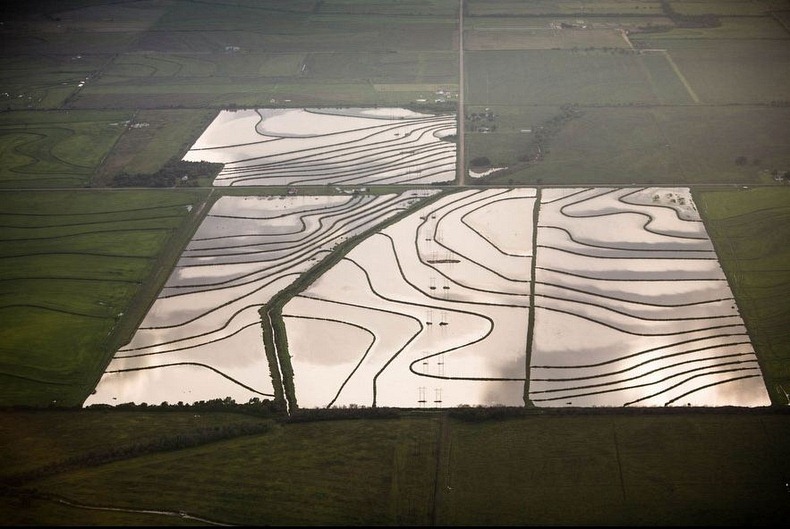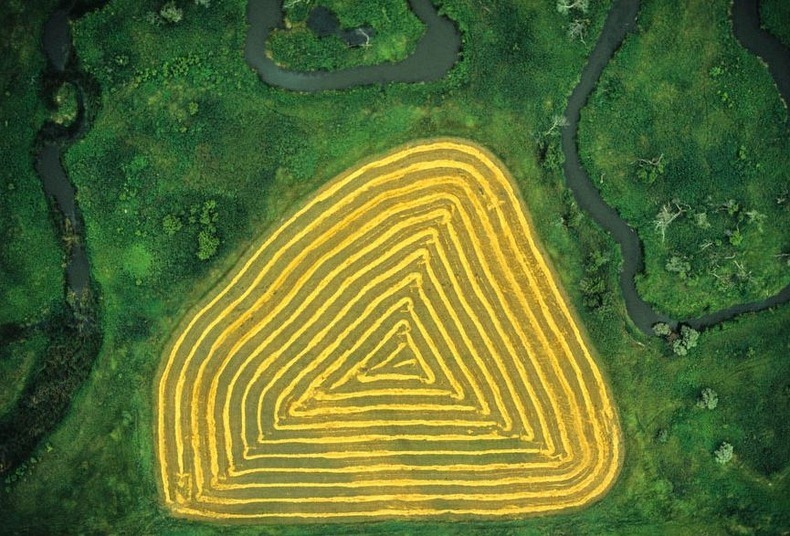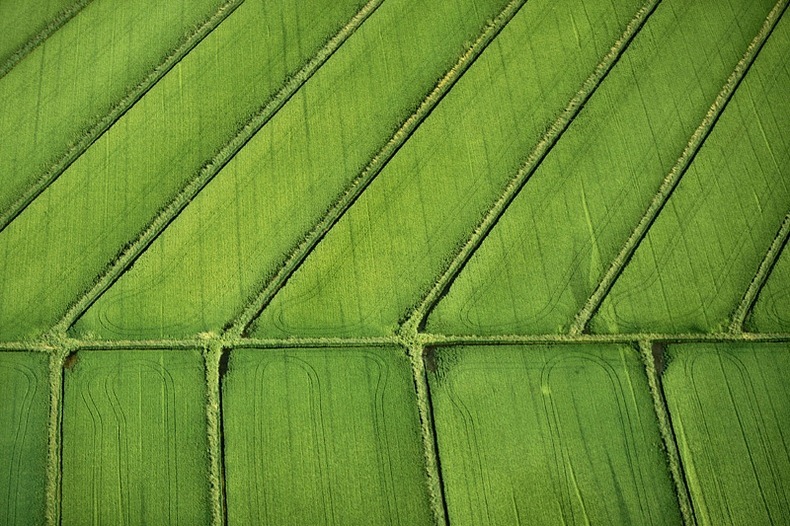Aerial photographer Alex MacLean has been photographing the American landscape from his four-seat Cessna 182 ever since he got his flight permit in 1975. MacLean has a Master’s degree in architecture and began flying as a way of doing site analysis. He was soon drawn towards the aesthetics of farmland, “in part because of its natural response to environmental conditions, climates, soils and topography.” MacLean estimates he has spent about 6,000 hours in the sky photographing American farms.
“A lot of what I photograph is through discovery of seeing crops, seeing patterns,” MacLean says. “Some is calculated, an example being wheat farming in the Palouse, dry-land farming in Montana and cranberry farming in Cape Cod.”
The photographers says there is nothing like flying in a small aircraft with the window open and watching the dramatic and quickly changing landscape evolve. “You can go from a dense urban area to wilderness in a matter of moments,” he says. “When flying over the Central Valley of California you can actually smell the flowers from the plane, you can also smell the onions.”
MacLean, who is based in Lincoln, Massachusetts, generally flies for two to three hours at a time and gets in a few sessions per day. He also does cross-country trips in which he flies for six to eight hours a day. Although when flying across the country, he says, it’s hard to make good time because he’s constantly circling around, photographing things that catch his eye.
“Often in doing a cross-country flight you will come across new agricultural practices,” MacLean says. “For example, catfish farms across the Mississippi or using berms (a wall or mound of dirt) for runoff control in Iowa.”
“The other thing I find interesting is the unknown; the unappreciated. Flying across the U.S. and discovering strip-mining for phosphates, pollution of the Gulf of Mexico creating dead zones from over-fertilizing farm lands, or fast-food chains expanding into suburbs.”
Cut flower fields Carlsbad, California in 1989.
Over-plowing in German Valley, Illinois in 1988.
Large desert center pivot irrigation system in Eloy, Arizona, in 2004.
Tilling tracks in Snowville, Utah, in 2005.
Hay bales surrounded by tilled circles in Washington County in 2005.
A cranberry bog, ditches and strips in Southeastern Massachusetts in 2006.
Cross-tilling of a field in Monon, Indiana, in 2007.
Wastewater form a phosphate strip mine in Parrish, Florida, in 2007.

A flooded rice field in Welsh, Louisiana, in 2007.
A cross-tilling line in Loraine, Texas, in 2007.
Dry land farming strips and low spots in Chugwater, Wyoming in 2008
Winter apple orchard in Clinton, Massachusetts, in 1977.
Converging field berms in Springfield, Nebraska, in 2011.

Field berms following the contour of the land in Springfield, Nebraska, in 2011.

Rings of shaft in Castleton, North Dakota in 1991.
Dryland Farming
Hay Bales in A Cash Valley Field

Rice Fields
Stream Interrupts Harvest Pattern
via CNN



























Comments
Post a Comment